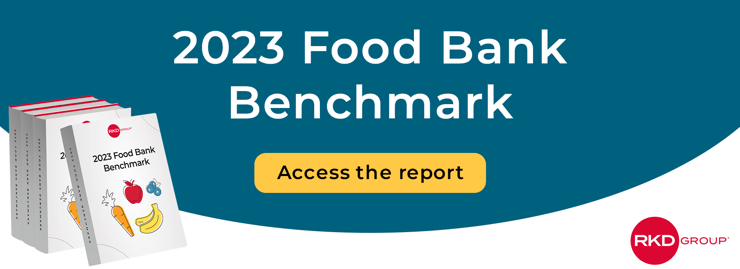What happens after a new donor gives to your food bank? Have you really thought about it and studied it?
What is their experience? What kind of “thank you” do they receive? What kind of communication do they see in the first few weeks after that first gift?
For those unfamiliar, this is typically what we call a donor journey. While many are aware of it, I’ve seen too many organizations thinking about donor journeys all wrong.
In this blog post, I’ll cover how all of us involved in food bank fundraising need to rethink our donor journeys.
Why food banks need better donor journeys
Every nonprofit organization should be thinking about better donor journeys, right? What’s the big deal about food banks?
Food banks happen to find themselves in a unique position thanks to two factors tied directly to the pandemic.
First, digital fluency has rapidly taken a greater hold of our society as in-person behavior gave way to online interaction. Think about how your own behavior has changed since 2020—online food delivery, virtual meetings, etc.
Second, food banks brought in a wave of new donors that look very different from the traditional food bank donor file in both demographics and behavior. In fact, our data experts analyzed more than 1 million donors at 72 food banks to better understand these trends.
Combining these factors means that food bank donors are younger and more diverse than ever, and they have different expectations when it comes to communication.
What’s wrong with our donor journeys now?
Let’s start by analyzing the problem we face.
Put simply: We’re all too stuck in our channel silos. The direct mail team builds a direct mail communication plan. The media team builds advertising funnels. The digital team (or maybe the in-house marketing team) builds an email communication plan.
These plans and strategies are all well thought-out and extremely detailed. But where they come up short is when you put yourself in the donor’s shoes.
Here’s an example.
A new donor—let’s call her Jane—gives online to your food bank for the first time after being motivated by an acquisition package she received in the mail. She then gets a warm thank-you email along with a tax-deductible receipt. Pretty standard.
Two days later, Jane gets another email—this one urging her to “act now” and donate to the ongoing match campaign. “Ugh, I just gave to them, and now they want more?” she thinks.
You may have just lost a donor.
Unfortunately, Jane’s experience can happen easily when communication isn’t properly integrated and data isn’t properly connected.
We need to think differently
We need to move past the binary thinking of direct mail and digital.
We must stop asking “What are we doing for digital?” and “What are you doing for direct mail?” Instead, we should be asking, “What are we doing for new donors?” and “What are we doing for lapsed?”
You should have lifecycle communication plans that cover how to:
- CONVERT new donors to second gifts
- REACTIVATE lapsed donors
- RETAIN existing core donors
- CULTIVATE core donors to larger gifts
We must also think long and hard about how we’re communicating with monthly, mid-level and major donors.
Then—within each of these segments—we create a strategic communication plan designed to maximize relevant and timely offers, information and news via direct mail, online, display media, search engine marketing (SEM), events, social media, etc.
Here’s how that might look across channels:

At the same time, we need to make sure that all your food bank’s data is connected to fully activate these smarter donor journeys. This enables the food bank to get deeper into segmentation, personalization and automation.
With the right data setup in place, Jane’s gift (from earlier) should have triggered a simple suppression on the digital match campaign. She also should have been placed into a donor journey to help convert her to a second gift. Then, the next piece of communication could have been an invitation to learn more about the incredible work the food bank does in her community.
A more advanced model could even identify that Jane is a prime candidate for monthly giving—putting her onto a communication path that leads to her becoming a dedicated sustainer.
How to start building smarter donor journeys
Sounds great, right? So where do we begin?
Here are a few steps to get started:
- 1. Connect your data. Find a solution that merges all your transactional and behavioral data across channels so you have a holistic view of your donors. Your database manager is the unsung hero here—the cleaner the data, the better you can do.
- 2. Build your lifecycle segments. Identify the factors that qualify your donors as core, lapsed, new, mid-level, etc. Again, connected data is the key here.
- 3. Audit the donor experience. Start to look at the various touchpoints your donors receive across channels. You might be surprised by the inconsistency.
- 4. Be intentional. Now that you know what the donor experience looks like, find ways to improve it across the donor lifecycles. You’re probably doing a lot of what you need to do it, but this will help you be better organized and optimized.
Donors are craving a better experience. Let’s give it to them.






Leave a comment: